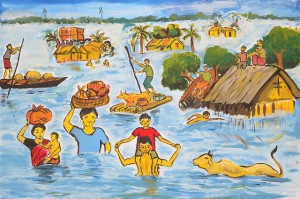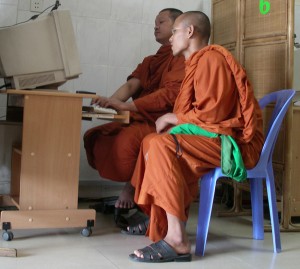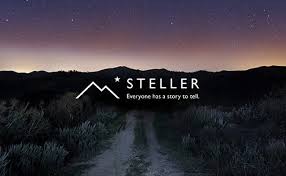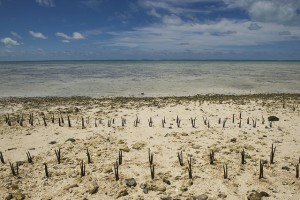The big hack: Pushing newsgames further
 Bring programmers, graphic designers and journalists together and give them 48 hours to develop games to help explain, clarify or interpret the news. That was the idea behind the Newsgames Hackathon held in the German city of Cologne this week.
Bring programmers, graphic designers and journalists together and give them 48 hours to develop games to help explain, clarify or interpret the news. That was the idea behind the Newsgames Hackathon held in the German city of Cologne this week.
Journalism orientated hackathons are fast becoming a valuable way of generating new ideas and formats for digital media.
“I always think it’s fantastic that people with different backgrounds work together,” said newsgames hackathon organizer, Marcus Bösch.
Bösch is a journalist and media trainer (he also works for DW Akademie) and is at the forefront of developing news games in Germany, where he co-founded the Good Evil games studio.
“You have a journalist and a programmer and they talk together to solve problems,” Bösch said to onMedia’s Guy Degen at the event, which ran from May 6-7, 2014.
“That’s the way we should work. That’s the only way forward. Otherwise we’ll keep on publishing articles that were made out of a Reuters feed for the next hundred years and that can’t be the future of journalism.”
The newsgames expert Tomas Rawlings was also on hand in Cologne to give advice to the hackers. He’s conscious that news editors often have a strong perception that “games equal fun or equal trivial” or the medium “can’t be used to cover a serious subject”.
Rawlings argues that newsgames should focus on engagement and not necessarily on being fun to play. His gaming studio Auroch Digital has developed successful newsgames that have tackled serious topics such as the civil war in Syria and climate change.
![]() read more
read more
Reporting on climate change: Part II
Good reporting on climate change is important, and likely to become more so in the future as the impacts of changing weather patterns on lives and economies grow. But climate change journalism can be challenging. It’s complicated, controversial and there is a lot of information, and misinformation, to wade through. In part I of this two-part series, Kyle James offered tips on how to report on a changing climate. In this post, he looks some common pitfalls to avoid.
![]() read more
read more
Proposed cyber law threatens free expression in Cambodia
In Cambodia, most media outlets firmly toe the government line. But one area where Cambodians can express themselves freely and receive and share unbiased information is on the Internet. However, a bill drafted in secret by the ruling party could put an end to that. For this year’s World Press Freedom Day, Kyle James examines the possible new restrictions that have press freedom advocates very worried, and possible reasons the government is getting strict.
![]() read more
read more
10 essential tips to teach digital safety for journalists
The NSA spying scandal is continuing to make headlines, and the recent news about the severe safety loopholes exposed by Heartbleed is frightening. And yet for many the threat remains worryingly rather abstract.
A recent survey in Germany found that the vast majority (75 percent) of Germans have not changed their behavior when it comes to personal data. Every second person still believes they have nothing to hide. Even if journalists have become more sensitized to digital safety, most still don’t know what PGP or OTR means. The topic is however of the utmost importance, not only to protect journalists themselves, but more importantly, their sources.
This is precisely the reason why the DW Akademie organized an open online workshop on digital safety last December. The topic is also now an integral part of Deutsche Welle’s own journalism training.
The biggest challenge by far is not about teaching and demonstrating tools, but rather to convince journalists to actually change their behavior and the way they communicate.
Journalism training has to be carefully reconsidered, says DW Akademie’s Steffen Leidel. Here are Steffen’s digital safety training tips for journalists presented during his talk at the International Journalism Festival in Perugia.
![]() read more
read more
Yet again, studies show how revealing phone data is

Icon by Anubisza
Many governments agencies around the world collect communications data as a matter of course. In the past, governments have downplayed privacy concerns around this data collection by emphasizing that they don’t collect the actual content of communications but rather so-called “metadata” – that is, the number called, what time the call was made, how long the call was and where the call was made from. A number of recent studies have demonstrated, yet again, that this metadata can be incredibly revealing.
And this is where journalists need to pay attention because if they want to keep a story they’re investigating under wraps or protect contacts, they need to understand how their metadata can be used to discover their activities and movements.
![]() read more
read more
Degrees of freedom: Shaping the internet’s future
 The fourth Freedom Online Conference Free and Secure Internet for All will be held in Tallinn, Estonia, from April 28th to 29th 2014 (#FOC14). This conference will bring together high-ranking representatives from the 22 member states of the Freedom Online Coalition – among them the US, Germany, Brazil and host Estonia. They will join up with a large number of civil society actors ranging from NGOs promoting internet freedom to large companies with a vested interest in all things internet like Google.
The fourth Freedom Online Conference Free and Secure Internet for All will be held in Tallinn, Estonia, from April 28th to 29th 2014 (#FOC14). This conference will bring together high-ranking representatives from the 22 member states of the Freedom Online Coalition – among them the US, Germany, Brazil and host Estonia. They will join up with a large number of civil society actors ranging from NGOs promoting internet freedom to large companies with a vested interest in all things internet like Google.
DW Akademie’s Holger Hank highlights the four most pressing issues from the perspective of media freedom.
![]() read more
read more
Tools and Apps for Journalists: Steller
Steller is a free storytelling app developed by Mombo Labs. It allows you to create multimedia stories directly on your iPhone or iPod touch by adding photos, videos and text. After several months in beta, Steller was made available in March on Apple’s App Store.
The number of people using the web on their mobile devices is ever growing. Moreover, newsrooms are realizing that not only do they have to be digital first, but they also have to produce content that can be consumed on a small screen. It’s interesting to see how apps such as Steller are focused on producing multimedia stories optimized to be consumed on mobile devices only.
![]() read more
read more
Reporting on climate change: Part I
Climate change was once a niche topic; now it’s as big as the world. And, it’s a challenging one for journalists, especially for those without a science background. But since climate change could well be the story of the century, it’s important to cover it well. In this two-part series, Kyle James has tips on how to approach climate reporting, make your stories appealing to the general public, and avoiding common mistakes.
![]() read more
read more
Tips for training conflict sensitive reporting
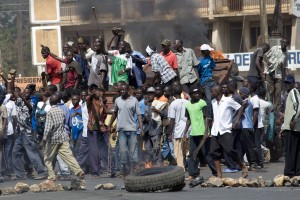
Yasuyoshi Chiba/AFP/Getty Image
From Rwanda and Iraq to Kosovo and Cambodia, media around the world has often played a role in stirring up conflicts – whether deliberately or unwittingly. Teaching journalists conflict sensitive reporting is one way of helping to reduce potential hostilities and create the conditions for peace. Journalist and media trainer Kerstin Kilanowski talks to onMedia about her experiences of teaching conflict sensitive reporting.
![]() read more
read more
Tow Center study focuses on video journalism
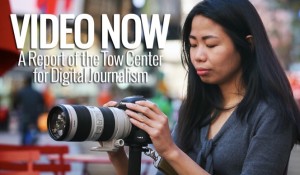 Online news video continues to rapidly grow, but how are newsrooms producing video? What formats are working? How important is mobile and social media? And what is the return on investment in allocating staff and resources to produce video journalism?
Online news video continues to rapidly grow, but how are newsrooms producing video? What formats are working? How important is mobile and social media? And what is the return on investment in allocating staff and resources to produce video journalism?
A new report, Video Now: The Form, Cost, and Effect of Video Journalism, produced by Professor Duy Linh Tu, of Columbia University’s Tow Center for Digital Journalism, has examined the video production of several American newspapers and online media organisatons.
It’s well worth watching the whole report.
The responses from producers and editors are both candid and insightful, especially regarding time and staff required to produce video and the number of views their pieces attract.
![]() read more
read more






